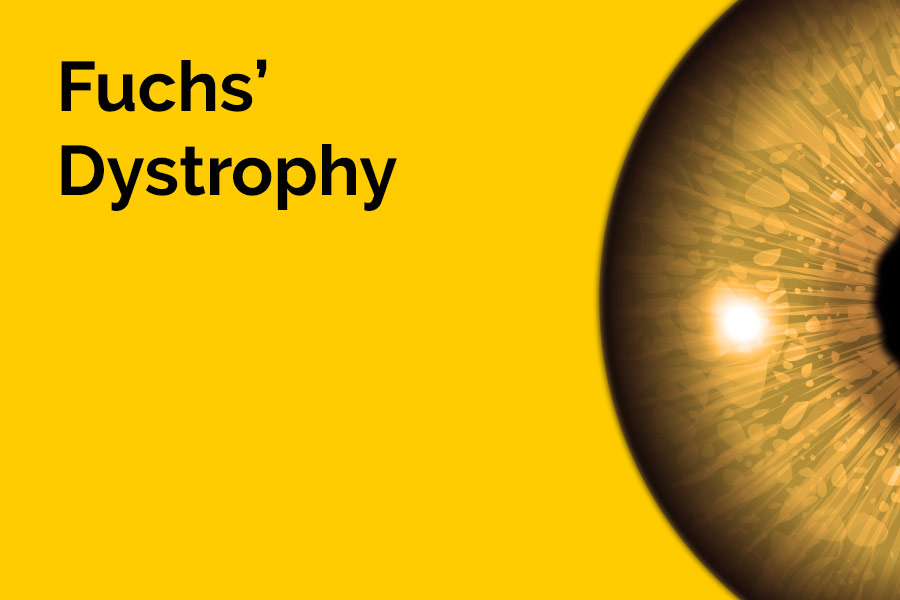Fuchs Dystrophy
Fuchs Dystrophy is an inherited eye condition which causes swelling in the cornea resulting in glare, discomfort and blurred vision. It is a common condition which generally affects people in middle age or later on in life.
The condition develops slowly and can affect people to a varying degree. Many sufferers never experience any real problems with their vision whilst others may require corneal treatment early in life.
Symptoms
The first sign of Fuchs Dystrophy is blurred vision. This blurred vision occurs due to fluid collecting in the cornea during sleep. This excess fluid evaporates over the course of the day, which results in reduced swelling and better vision. As the condition matures, these periods of swelling, impaired vision and pain begin to last longer.
Other symptoms include halos around lights, glare from bright lights and poor night vision.
Individuals with Fuchs Dystrophy may experience coarse, rough feelings in the eye, occasionally accompanied by sharp pains. This is due to the fluid collecting below the front layer of corneal cells known as the epithelium. Many patients also find that they need to wear sunglasses, wrap around glasses or sun visors due to discomfort from bright lights.
Many patients with Fuchs Dystrophy describe their eyesight as being similar to having grease smeared on their eyeglasses.
Diagnosis, Screening and Tests
A doctor is able to diagnose Fuchs’ dystrophy during a slit-lamp examination. A slit lamp allows your eye doctor to see the structures at the front of your eye under magnification. This special microscope uses an intense slit of light to illuminate the cornea, lens, iris and the space between your lens and cornea.
Other tests can also be carried out such as a pachymetry, to measure the thickness of the cornea and a specular microscope examination which allows the doctor to look at the thin layer of cells that line the back part of the cornea.
Treatments
Good vision can be restored in patients with Fuchs’ dystrophy. Treatments will vary depending on the stage in which it was diagnosed. The frequency of follow up visits to your doctor will also vary. Early stages may involve annual visits, however, more developed cases or certain treatments may require visits every few months or more.
If Fuchs’ dystrophy is not affecting your sight then you do not need to receive treatment. If your vision is mainly affected in the early stages of the day, saline solution in drops and ointments can sometimes help by drawing out fluid from your swollen cornea.
If corneal blisters develop then you may be prescribed tablets to help with the pain or comfort you may be experiencing. Soft bandage contact lenses may also need to be worn both day and night, to relieve any pain by protecting exposed nerve endings on the surface of the cornea prior to receiving a transplant.
Since 2000, selective corneal transplantation techniques have been developed which allow surgeons to replace the damaged endothelial layer with healthy tissue through a small, structureless incision in an operation similar to modern cataract surgery.
Prevention
Fuchs dystrophy is an inherited corneal dystrophy affecting the endothelium, therefore, there is no primary prevention for the disease.
